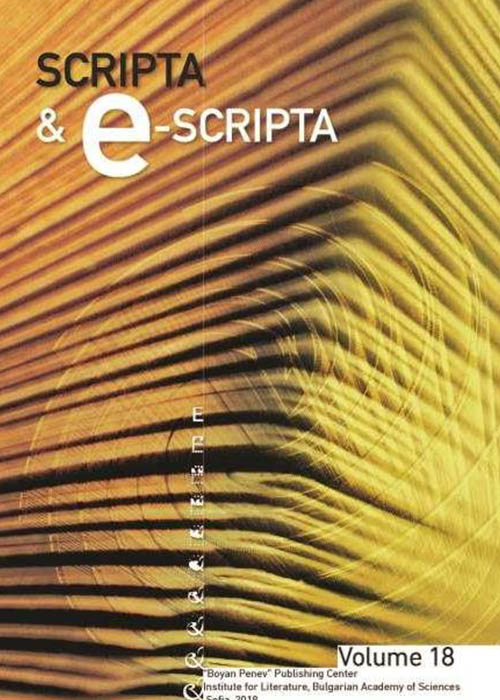The Christological Cycle in the Naos of the Prophet Elijah Church (1550) in Sofia: Non-Traditional Elements and Athonite Influences
Христологичният цикъл в наоса на църквата „Св. пророк Илия“ (1550 г.) в София: нетрадиционни елементи и светогорски влияния

- Author(s): Ralitsa Rousseva
- Subject(s): Philology // Linguistics // palaeoslavic studies //
-
Published by: Institute for Literature BAS

- Print ISSN: 1312-238X
- Summary/Abstract:
The paper is a continuation of the article “The Last Judgment Scene in the Prophet Elijah Church (1550) in Sofia: Untraditional Elements and Athonite Influences” (Rousseva 2020) and analysed the frescoes in the naos of the church. There is a problem with the overall iconographic programme in the naos: the obligatory scenes illustrating the Annunciation, the Transfiguration and Pentecost are absent, but there are illustrations in separate scenes of secondary and rarely encountered episodes. The scenes in the naos provide a wide field for interpretation, as it is ‘mediate’ between the art of Macedonia of the 14th–15th century and the art of the Cretan school of the 1530s and the 1540s. Beyond the large monasteries of Mount Athos, the island in the Lake of Ioannina and the Meteora, the murals in the Iliyantsi are among the first where the “new” scenes and images are interpreted, and in some respects, the first monument, e. g the kneeling Virgin in the scene of the Nativity, the Flagellation, The Apostles at the Grave has been included. For the first time in a Bulgarian church are illustrated the Sundays of the Pentecostarion. Of the works published so far, the scene Christ expels seven demons from Mary Magdalene is the earliest example in Balkan art. There are visible similarities of the scenes in the naos with the later examples, the work of the atelier of St Pimen. His teacher, Tomas, could possibly have worked at the church in Iliyantsi.
Journal: Scripta & e-Scripta vol. 21, 2021
-
Page Range: 261-281
No. of Pages: 21
Language: English - LINK CEEOL:
-
Ralitsa RoussevaInstitute of Art Studies, Bulgarian Academy of SciencesDescription
Rousseva, Ralitsa, Assoc. Prof., PhD Institute of Art Studies, Bulgarian Academy of Sciences; Museum for Christian Art at the Crypt of St Alexander Nevski Cathedral, Sofia, Bulgaria
Ralitsa Svetlinova Rousseva is an Associate Professor at the Department of Old and Mediaeval Art in the Institute of Art Studies (Bulgarian Academy of Sciences) and Head of Department „Museum of Christian Art, Crypt of St Alexander Nevsky Cathedral“ (National Gallery). She has over 50 publications on the problematics of Byzantine and Post-Byzantine art. Some of her main topics are the Bulgarian art from 13th–14th century, monuments of Christian art in Albania, iconography of the Slavic saints. In her latest book Golden Book. Icons from Bulgaria (9th–19th century) are analyzed 100 icons, which traces the development of the icon painting in Bulgaria. She is a curator of the exposition in the Museum of Christian Art and the exhibitions: Icônes et manuscrits bulgares, Musées royaux d’Art et d’Histoire, Bruxelles 2002; Bulgarian Christian Art, State Historical Museum, Moscow 2003; curator of the Bulgarian part of the exhibition Byzantium. Faith and Power (1261–1557) at the Metropolitan Museum of Art, New York 2004; The Bulgarian Christian Art 13th–15th Centuries and the Palaeologan Renaissance. National Museum of History, Sofia 2006; Icons from Bulgaria 13th – 19th Centuries. State Historical Museum, Moscow 2009; The Rejoicing of Prayer. Unknown Icons from the Fund of Crypt. Museum of Christian Art, Crypt of St Alexander Nevsky Cathedral”, Sofia 2014 and many others.
-
KEYWORDS: Iliyantsi monastery // Post-byzantine art // MOUNT ATHOS // Cretan school // Passion cycle // St Pimen of Zograph //
-